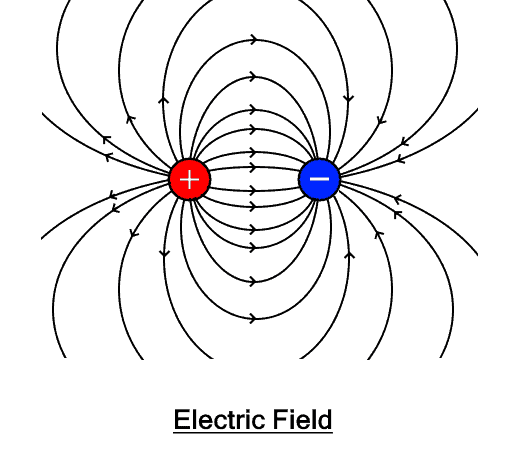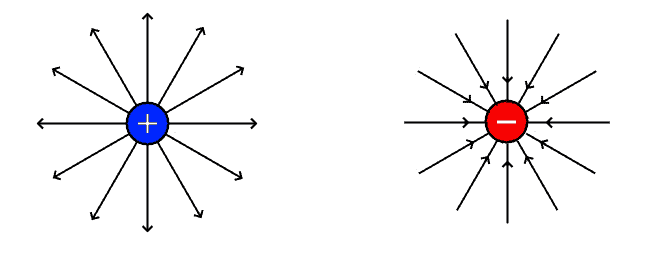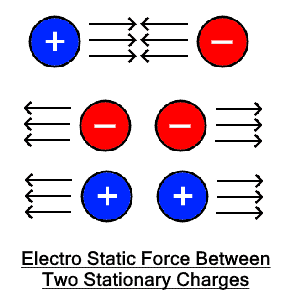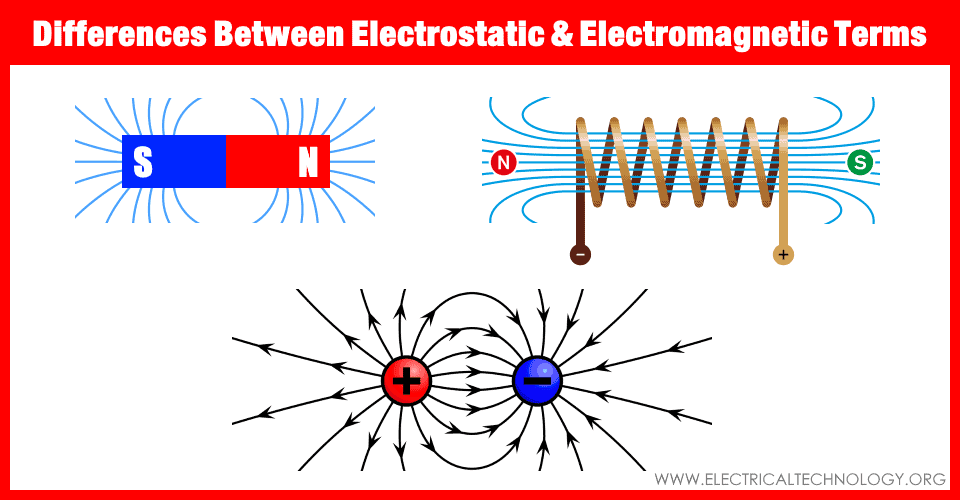Differences Between Electrostatic & Electromagnetic Terms
Differences between Electrostatic and Electromagnetic Terms
Electricity and magnetism are the most basic terms used in our daily day life and electrical engineering. They are very closely related to each other and very much depend on each other. One does not exist without the other. The term electrostatic and electromagnetic arises from the interaction between electricity and magnetism.
But what actually is electrostatic and electromagnetic and the differences between them? Let’s discuss the basics first as most of the terms related to electromagnetic and electrostatic looks like similar and confusing for newbies.
Related Posts:
- Magnetic Terms used in Magnetic Circuits – Definition & Formulas
- Electric & Magnetic Flux, Density & Field Intensity Formulas
Electrostatic
Electrostatic is a branch of physics that deals with the study of electric charges at rest. The term electrostatic is made of two words, “electro” and “static”- electro refers to the charges while static means stationary or rest position. The electrostatic term arises from the phenomenon that there is a force of attraction or repulsion between two stationary charges.
The electrostatics give rise to two more terms that briefly explain it. these terms are electrostatic field and electrostatic force.
Electrostatic Field
The electrostatic field is the region surrounding a static charge where the effect of the charge can be felt. A stationary charge that could be either positive or negative has an area of effect in which if another charge is placed, that charge will either attracts towards or push away from it.


Related Posts:
- Difference Between Electric and Magnetic Circuit
- Difference between Electric Field and Magnetic Field
Electrostatic Force
The force of attraction or repulsion between two charges at rest is called electrostatic force. Two same charges have a force of repulsion between them while two different charges have a force of attraction between them.

To elaborate it more precisely, positive charges push away positive charges and negative charges push away negative charges. While positive and negative charge attracts/pull-in each other.
Related Posts:
- Coulomb’s Laws of Magnetic Force – Formula & Solved Example
- Coulomb’s Laws of Electrostatics With Example
- Oersted’s Law of a Magnetic Field of a Straight Current Carrying Conductor
Electromagnetic
Electromagnetism is a branch of physics that deals with the study of electromagnetic field produced by the charges in motion.
The word electromagnetic is made up of two words “electro” and “magnetic”, electro means charges or electricity and magnetic means magnets. So the electromagnetism describes the relationship between electricity and magnetism.
Whenever we talk about electromagnetism, we talk about electromagnetic field and electromagnetic force.
Electromagnetic Field
The electromagnetic field is the combination of electric field (electrostatic field) and magnetic field. When a charge moves inside a conductor it produces a magnetic field in addition to its own electric field. So we can say the electromagnetic field is a superset of the electrostatic field. Both the electric and magnetic field co-exist and are mutually perpendicular to each other.

The electric field and magnetic field are also dependent on each other. A time-varying electric field generates a magnetic field while a time-varying magnetic field generates an electric field. The electromagnetic fields are widely used in electric machines in generators.
Related Posts:
Electromagnetic Force
There is a force of attraction or repulsion between two charges in motion due to the presence of an electromagnetic field generated by them, such force is known as the electromagnetic force. Charges experience such force when they fall inside each other EM field.
As EM is the combination of electrostatic and magnetic force, the charges experience both types of forces between them.
The amount of force exerted on them depends on the strength of the EM field. By flowing the charges inside a coil made of multiple turns and increasing the number of charges (current), we can easily increase the strength of the EM field.
When a current-carrying conductor is placed in a magnetic field, the EM field produced by the current interacts with the magnetic field and the charges experience a force that is normal to both the direction of current and the magnetic field.
Electromagnets are widely used due to the fact that their strength can be modified and they can turn on and off on command. They are also used to run trains by attracting them from the front while repelling them from behind. It also levitates the train to reduce the fraction and increase its speed.
Related Posts:
Key Differences between Electrostatic and Electromagnetic Terms
The following comparison table shows the main differences between similar terms used in Electrostatic and Electromagnetic.
| Electrostatic | Electromagnetic |
| Branch of physics that deals with charges in rest | Branch of physics that deals with the electromagnetic field produced by charges in motion. |
| The electrostatic field generated due to charges in rest | The electromagnetic field generated due to charges in motion |
| Electrostatic force exists between charges in rest | Electromagnetic force exists between charges in motion |
| The electrostatic field exists as long as there is a charge. | The EM field exists as long as the charge is in motion. |
| The electrostatic field is time-invariant | The EM field is a time-varying electric and magnetic field |
| The electrostatic field’s direction is radially outward and inward for positive and negative charges respectively | EM field consists of electrostatic and magnetic field whose direction is mutually perpendicular to each other. |
| The electrostatic force direction is either towards or away from two charges | The EM force is directed towards or away from two charges. |
| The electrostatic field does not interact with a static magnetic field. | An EM field which is time-varying experience a force inside a magnetic field. |
| It is not one of the 4 fundamental forces of nature | The electromagnetic force is one of the 4 fundamental forces of nature. |
| The electrostatic field is a part of electromagnetic field | The electromagnetic field is made of electrostatic and magnetic field. |
Related Posts:
- What is a Solenoid and Solenoid Magnetic Field
- Maximum Flux Density (BMAX) Calculator. (Formulas & Equations)
- Inductance of Air Core Inductor Calculator
- Inductance of Straight Wire & Electrode Calculator
- What is Faraday’s Law? Laws of Electromagnetic Induction
- Lenz’s Law of Electromagnetic Induction
- Difference Between Grounding, Earthing and Bonding
- Difference Between Active and Reactive Power – Watts vs VA
- Difference Between Capacitor and Supercapacitor
- Difference between Electron Current and Conventional Current







